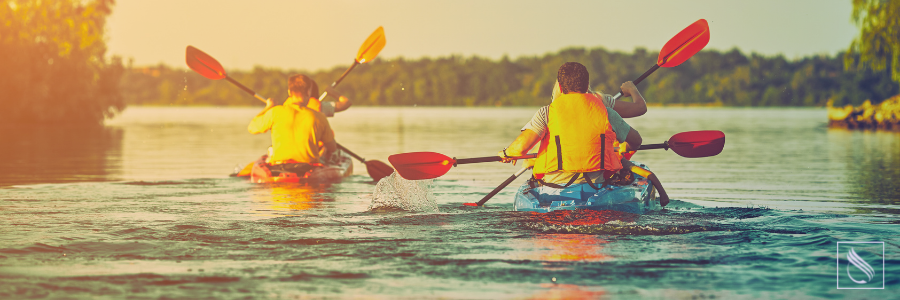Water is life. The human body is up to 60 percent water, and more than 70 percent of the earth’s surface is covered with water. You can last up to three weeks without food, yet you can’t survive more than three days without water. For all the life and vitality water brings, water can also be deadly. The World Health Organization (WHO) estimates 236,000 deaths by drowning each year, making it the third leading cause of unintentional injury-related death worldwide.[i] In the United States alone, 11 people, on average, die each day from drowning.[ii]
Whether pool parties, trips to the beach, or an afternoon out in a canoe, it’s easy to take water activities for granted without considering the inherent risks. These are activities that may be common for families, individuals, or a group of friends; however, these activities take on a new level of risk when they are sponsored by an organization of the Seventh-day Adventist Church.Myth vs. Fact
First, let’s look at some common misconceptions about drowning. We commonly think of drownings as something that results in death, but the medical definition of drowning is “the process of experiencing respiratory impairment from submersion in liquid.” On average, nonfatal drownings in the United States happen twice as often as fatal drownings and can result in brain damage and long-term disability.While it’s true that learning how to swim can reduce the risk of drowning by 88 percent for kids under the age of 4,[i] knowing how to swim won’t necessarily prevent drownings. Muscle cramps, rip currents, and fatigue can affect even strong swimmers who are comfortable in the water.
Another myth, which we can probably attribute to television and movies, is that drownings are loud, dramatic events, with the victim thrashing around for a long period of time. In real life, a person can slip silently under the water without much notice. Drowning can occur in as little as 20 seconds.
Always Have a Lifeguard
Drownings are most likely to occur during water activities, such as swimming or boating, and certified lifeguards should be present for any activity where people are in or on the water. The American Red Cross recommends always consulting state and local health codes to determine the appropriate lifeguard-to-participant ratio.Other factors in determining how many lifeguards should be present include:
- environmental hazards, such as tides, wind conditions, water visibility, sight lines from land, and weather conditions
- type of water space (pool, lake, river, ocean, etc.) and size of water space
- experience of lifeguards
- skill level of swimmers
- presence of specialized water “play” equipment (slides, diving board, inflatables, etc.)
- the degree of risk of the activity.
Supervision Is a Must
The presence of a lifeguard does not release adults and sponsors from their duty of care. Adults should be actively involved in supervision during water activities. Proper supervision includes watching those in their care rather than being on their phone, reading, or talking among themselves. If the adults are swimming or taking part in the water activity, they should also be watching for any signs of distress among those in the water.Even events that don’t involve water activities can present a risk for drowning if water is nearby. During a church picnic by the lake or a Pathfinder trip to the beach to look for shells, it is important to know where everyone is at all times. Consider having someone watch the shoreline to make sure no one wanders down to the shore where they could fall in. Again, supervision is critical, and adults should be with the kids at all times.
Boat Safety
Anytime you use canoes, kayaks, or paddleboats, be sure to inspect all the equipment prior to use. Always check boats for cracks or leaks and inspect paddles to be sure they are sturdy and intact. Everyone should always wear a properly sized lifejacket when they are in or on a boat.Lifeguards should also be present for all boating activities. The size of the area in use, the number of people on the water, and their experience will dictate the proper ratio of lifeguards to boaters. You should always know and follow state and local laws.
Remember your environment when planning for boat safety. Canoeing on a river presents increased risk compared with the flat water of a lake. Be sure your group doesn’t get spread out, leaving participants isolated. Only take experienced boaters on rivers that have anything above Class I rapids, and make sure every participant knows how to protect themselves if they get overturned in quick water.
Have An Emergency Plan
Finally, it is important to have a plan for dealing with an incident in the water. Share this plan with every adult sponsor so they know what to do. Your plan needs to include who should attempt to rescue a drowning person, as well as safe methods of rescue in a variety of situations.For example, rescuing someone in a pool may be relatively easy compared to rescuing someone who is caught in a rip current or someone who overturned their canoe in a fast-moving river. Unfortunately, there are many accounts of people drowning while trying to rescue others.
Part of your water emergency plan should also include what to do if someone goes missing near the water. If this happens, you may only have a minute or two to find them before it’s too late. Immediate communication with other sponsors to initiate your plan is critical in this situation.
If this happens, someone needs to immediately begin a search of the shoreline for the missing person. Other adults should be responsible for a quick headcount of everyone in your group to confirm the person is actually missing. Someone should also notify the authorities of a possible drowning victim so a more thorough search and rescue can begin immediately.
No one ever wants a fun activity to turn dangerous, which is why planning is so important for any activity that is near water. If your outing will include water activities, be sure to contact your conference risk manager to see if you have the proper insurance coverage for this event.
References
[i] Stop Drowning Now. (2020, August 27). Facts & Stats About Drowning. Retrieved January 18, 2022, from https://www.stopdrowningnow.org/drowning-statistics/
[i] World Health Organization. (2021, April 27). Drowning. WHORetrieved January 18, 2022, from https://www.who.int/news-room/fact-sheets/detail/drowning
[ii] Centers for Disease Control and Prevention. Drowning Prevention. CDC. Retrieved January 18, 2022, from https://www.cdc.gov/drowning/
Credit Image: 6okean-stock.adobe.com
Credit Image: 6okean-stock.adobe.com


